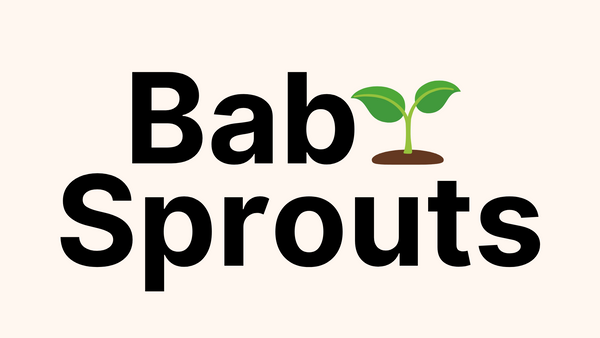
Beddy's Bedding: Revolutionizing Sleep for Babies and Parents
The Rise of Eco-Conscious Baby Fashion
Why Choose Eco-Friendly Baby Clothes?
Eco-friendly baby clothes are a smart choice for many reasons. They are safe for your baby's delicate skin. These clothes don't have harsh chemicals or dyes. This helps prevent skin irritation and allergies.

These clothes are also good for the planet. They use less water and energy to make. Many are made from organic materials that grow without pesticides. This helps keep our soil and water clean.
Choosing eco-friendly clothes teaches good habits. It shows you care about the future. You're setting a good example for your child. It's a small step that can make a big difference over time.
The Impact of Sustainability on the Baby Clothing Industry
The baby clothing industry is changing. More parents want eco-friendly options. This has led to new brands and products. Big companies are also making changes to be more green.
Sustainable practices are becoming common. Brands are using organic cotton and bamboo. They're finding ways to save water and energy. Some are even making clothes that can be easily recycled.
This shift is good for business too. Many parents will pay more for eco-friendly clothes. They see it as an investment in their baby's health. It's also an investment in the planet's future.
The Journey of an Eco-Friendly Baby Outfit
An eco-friendly baby outfit starts with good materials. These might be organic cotton or bamboo. Farmers grow these without harmful chemicals. This helps protect the environment.
Next, the fabric is made into clothes. This process uses less water and energy than usual. The dyes are natural and safe. Workers get fair pay and good working conditions.
The clothes are then packed in eco-friendly ways. They might use recycled boxes or paper bags. Shipping is done in the most efficient way possible. This helps reduce the carbon footprint.
Finally, the clothes reach your baby. They're soft, safe, and stylish. When outgrown, they can be passed on or recycled. This completes the eco-friendly cycle.
Key Features of Eco-Friendly Baby Apparel
The Materials That Make a Difference
Eco-friendly baby clothes use special materials. These are better for babies and the earth. Here are some common ones:

- Organic cotton: Grown without harmful pesticides
- Bamboo: Soft, breathable, and grows quickly
- Hemp: Strong and gets softer with each wash
- Recycled polyester: Made from plastic bottles
- Tencel: Created from wood pulp in a clean process
These materials are gentle on baby's skin. They're also durable, so clothes last longer. This means you can pass them down or resell them. Some brands mix these materials for the best results.
Organic cotton is a top choice. It's soft and safe for sensitive skin. Bamboo is great for absorbing sweat. Hemp is tough and long-lasting. Recycled polyester helps reduce plastic waste. Tencel is smooth and eco-friendly.
How Eco-Friendly Designs are Changing the Game
Eco-friendly baby clothes are not just about materials. The designs are smart too. Brands are making clothes that grow with your baby. This means you need to buy less over time.
Some features of eco-friendly designs include:
- Adjustable waistbands
- Fold-over cuffs on sleeves and pants
- Reversible items for more wear options
- Neutral colors that work for any gender
- Simple styles that are easy to mix and match
These designs make clothes last longer. They also make it easier to share clothes between siblings. Some brands are even making clothes that convert. A onesie might turn into a romper as your baby grows.
Eco-friendly designs often focus on simplicity. This means less waste in production. It also means clothes are easier to recycle when they're worn out.
The Role of Recycling in Baby Fashion
Recycling is a big part of eco-friendly baby fashion. It helps reduce waste and save resources. Many brands now use recycled materials in their clothes.
Some ways recycling is used in baby fashion include:
- Making fabric from recycled plastic bottles
- Using scraps from other clothing to make new items
- Creating buttons and snaps from recycled metals
- Turning old clothes into new fabric through special processes
Brands are also helping parents recycle outgrown clothes. Some have take-back programs. You can send back old clothes to be recycled. Others partner with second-hand stores to resell gently used items.
Recycling helps close the loop in fashion. It turns waste into new products. This saves energy and reduces the need for new raw materials. It's a key part of making baby fashion more sustainable.
Where to Find the Best Eco-Friendly Baby Outfits
Top Brands Specializing in Sustainable Baby Attire
Many brands now focus on eco-friendly baby clothes. Here are some popular ones:

- Pact: Known for organic cotton basics
- Burt's Bees Baby: Offers cute designs in organic cotton
- Finn + Emma: Uses organic materials and fair trade practices
- Kate Quinn: Specializes in soft, organic clothing with modern designs
- Hanna Andersson: Known for durable, organic cotton pajamas
These brands offer a range of styles. You can find everyday wear and special occasion outfits. They all use sustainable materials and ethical practices.
Some of these brands cost more than regular baby clothes. But they often last longer and can be resold. This can save money in the long run. Many parents feel the quality is worth the extra cost.
Online Stores and Eco-Friendly Marketplaces
There are many places to buy eco-friendly baby clothes online. Some popular options include:
- EarthHero: A marketplace for all kinds of eco-friendly products
- The Tot: Offers curated selections of sustainable baby items
- Maisonette: Features high-end eco-friendly baby fashion
- Etsy: Has many small makers offering handmade, eco-friendly options
- Amazon's Climate Pledge Friendly section: Highlights sustainable products
These sites make it easy to compare different brands. You can often find sales and deals too. Some offer reviews from other parents, which can be helpful.
Remember to check shipping policies. Look for sites that use eco-friendly packaging. Some offer carbon-neutral shipping options. This helps reduce the environmental impact of your purchase.
Shopping Tips: How to Spot Authentic Eco-Friendly Pieces
It's important to know how to spot real eco-friendly baby clothes. Some brands may claim to be green when they're not. Here are some tips:
- Look for certifications like GOTS (Global Organic Textile Standard)
- Check the materials list for organic or recycled fabrics
- Read about the brand's sustainability practices on their website
- Be wary of very cheap "eco-friendly" items
- Check for transparency about where and how clothes are made
Don't be afraid to ask questions. Good brands are happy to share info about their practices. They should be clear about their materials and production methods.
Remember, no brand is perfect. Look for ones making real efforts to be sustainable. Even small steps towards eco-friendly fashion can make a difference. By choosing wisely, you can help create a better future for your baby and the planet.
